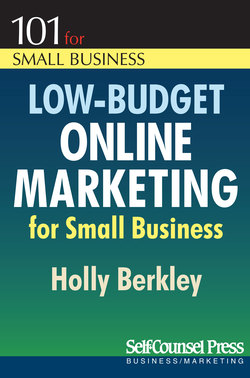Читать книгу Low-Budget Online Marketing - Holly Berkley - Страница 12
На сайте Литреса книга снята с продажи.
Case Study
ОглавлениеWhen Pepsi-Cola launched its website www.PepsiStuff.com in 2000, the site became the centerpiece of one of the most successful advertising campaigns in Pepsi’s 103-year history — and the company didn’t sell a single bottle or can of Pepsi online.
According to John Gaffney’s article in Business 2.0, here’s how it worked: Pepsi printed special codes underneath more than 1.5 billion caps of plastic Pepsi bottles. Each code was worth 100 points, which could be used to shop online for prizes such as clothing and CDs.
Taking the campaign online had its advantages from the very beginning. Right away, Pepsi-Cola saved more than $10 million usD simply by not having to print prize catalogs. Pepsi also benefited from its partnership with Yahoo! (See Chapter 7 for more information about online co-branding opportunities.) With Yahoo! hosting and providing technical assistance to the PepsiStuff.com website, Pepsi was able to sidestep having to manage its own high-traffic e-commerce site. In exchange for its technical assistance, Yahoo! received co-branding on all PepsiStuff bottles and in-store displays, as well as $5 million usD in television and print exposure.
During the online campaign, overall national sales of single-serve Pepsi bottles jumped 5 percent. That is a huge accomplishment considering that overall soda sales increased by only 0.2 percent the previous year. More important, the online campaign allowed Pepsi to collect 3.5 million customer profiles, which included golden demographic information such as customer name, email address, zip code, and date of birth. Once Pepsi’s marketing team could confirm who their target audience was, they were able to create additional extremely effective marketing campaigns both online and offline.
Demographic information collected during the PepsiStuff campaign solidified the company’s decision to place Britney Spears in its Super Bowl commercial. The Britney Spears campaign proved to be a huge success with Pepsi’s target audience. In only nine days, more than 1.1 million people logged on to www.yahoo.com and downloaded the television commercial. For consumers to actively take the time to download a commercial shows that Pepsi appealed to its target audience with overwhelming success.
Finally, as you read the next few chapters, think about how you can take the strategies and case studies presented throughout this book down to a more localized and personal level for your business. The Internet may have taken the small business global at one time, but today, the most success is found at the local level. Google, Microsoft’s Bing, and Yahoo! now list local businesses at the top of their keyword searches. Customers rely on their mobile phones and applications like Foursquare to find local businesses and specials. We’re seeing localized coupon sites like Groupon.com generate incredible success by marketing local businesses to local customers. More and more people check local directory sites like Kudzu.com, Yelp.com, and various city guides for testimonials, ratings, and contact information before venturing to a company’s actual website. Having a strong, local, targeted online presence is essential for the success of today’s small businesses, and it’s crucial to how they stand out from the more global competitors online.
